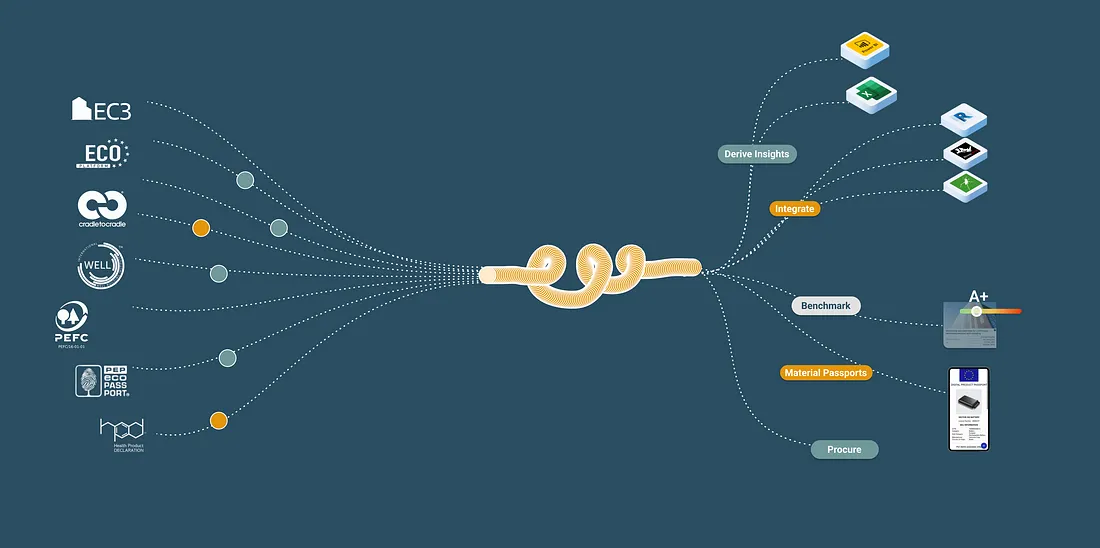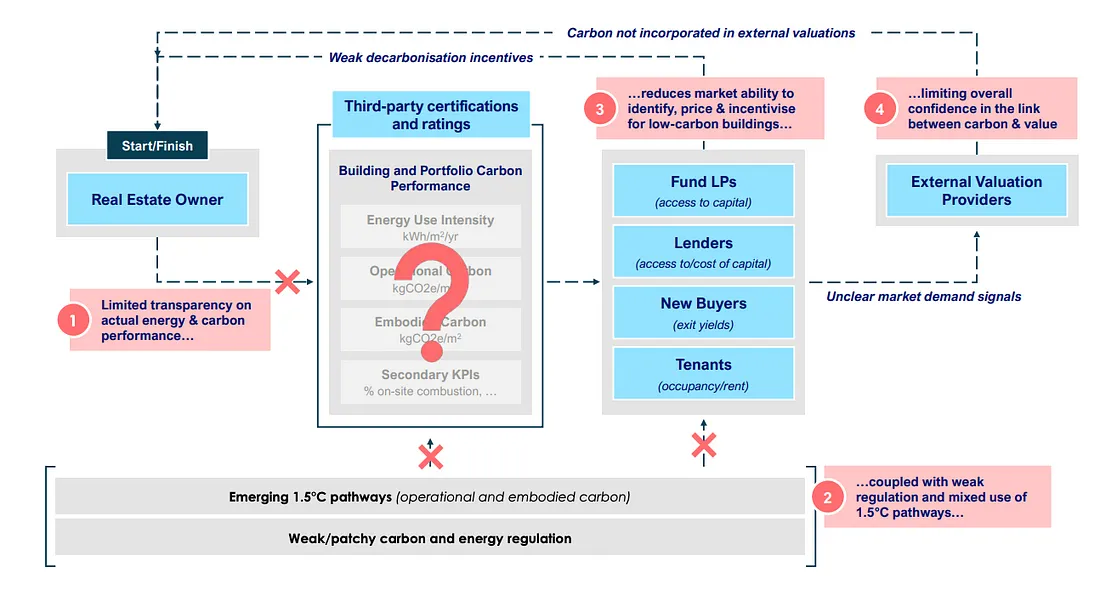Shifting the Paradigm: Why the Construction Industry Needs to Embed Sustainability in Every Process

Introduction
The global climate crisis is calling for immediate and transformative action across all sectors, and one of the most significant players in this scenario is the construction industry. Central to this transformation is the concept of carbon budgets, a term made prominent by the Intergovernmental Panel on Climate Change (IPCC). This framework sets a cap on the total amount of carbon dioxide emissions allowable to keep global temperature rise within a specific limit [1]. The role of the construction sector in meeting — or overshooting — these budgets is considerable, accounting for a staggering 39% of global CO2 emissions [2]. The age-old approach of compartmentalizing sustainability into specialized teams is inefficient and must be overhauled.
The Construction Sector’s Carbon Footprint
Beyond the visible structures, buildings are significant contributors to carbon emissions at various life-cycle stages — from material extraction to end-of-life decommissioning. It’s not just about the energy a building uses over its lifetime, but also the embedded energy in the building materials and the construction process itself. The need for buildings is only expected to grow, with the global population projected to reach 9.7 billion by 2050 [3]. This makes it even more crucial for the construction sector to adapt and evolve to fit within global carbon budgets.
The Supply Chain Angle
The complexity of the construction sector’s carbon footprint also lies in its expansive supply chain. The emissions from material manufacturing, transport, and waste disposal are often overlooked but can be significantly reduced through conscious choices and better management practices.
The Designer’s Role
Architects and designers hold a lot of power in shaping the sustainability of buildings. A report indicates that decisions made during the early design phase can determine up to 80% of a building’s life-cycle environmental impact [4].
Simple choices about materials, form, insulation, and energy sources have repercussions that last for decades.
The Case for Early Integration
Given the crucial decisions made in the early phases, there’s an urgent need to integrate sustainability metrics into the design tools used by architects. This early integration can facilitate better decision-making, offering a path to create structures that are both aesthetically pleasing and environmentally responsible.
The Necessity for Integration
It’s time to break down the silos and embed sustainability in every process and decision in the construction industry. Having a separate sustainability team to check boxes is no longer enough.
Technology for Good
Emerging technologies offer promising solutions. AI-powered algorithms and Life-Cycle Assessment (LCA) tools can provide real-time sustainability data right where decisions are made. This allows for a more dynamic and responsive approach to sustainability, rather than a retroactive one.
A 2050 Materials Case-Study: Codesign Integration

One of the most promising examples in this direction has been the integration of real-time sustainability metrics into design tools. A prime example is the case of Codesign, a Concepting iPad App for Architects. This tool is frequently used in the initial phases of design, where the potential to impact a building’s emissions is highest.
By integrating 2050 Materials’ API that provides real-time sustainability data, including estimates of embodied carbon emissions, Co-Design has enabled architects to immediately see the environmental consequences of their design choices.


This is more than just an isolated success story; it represents the onset of a revolution in how we approach sustainable construction. Imagine a future where every tool used in the construction sector, from conceptualization to final construction, provides real-time insights into sustainability metrics. That’s the kind of game-changing integration that can propel the entire industry toward true sustainability, fulfilling our collective responsibility to adhere to global carbon budgets.
Accountability Across the Board
When sustainability is an integral part of the process, everyone from the architect to the contractor and the supplier becomes accountable. This democratic approach distributes responsibility and ensures that environmental considerations are not an afterthought but a driving force in every project.
Conclusion
The need for a paradigm shift in the construction industry has never been more urgent. Embedding sustainability metrics into every stage of the construction process is not just a requirement but a responsibility we all share. By adopting an integrated approach, we can not only drastically reduce the industry’s carbon footprint but also make meaningful contributions to the global carbon budgets. This isn’t just about adhering to guidelines or achieving certifications; it’s about steering the industry toward a genuinely sustainable and climate-neutral future.
2050 Materials: Pioneering a New Path
At 2050 Materials, we’re taking committed steps to be part of this industry-wide transformation. Our platform specializes in gathering a vast and high-quality database of climate data around building materials. By adopting an API-first approach, we’re enabling seamless integration of real-time sustainability data into digital design processes.
This makes actionable, accurate information readily available for architects, designers, and contractors at every stage of a project. While we pride ourselves on being data providers, we see our role as much more than that.
We aim to be long-term partners in sustainable construction, constantly exploring new technologies and methods for data-driven environmental insights. If you’re as passionate as we are about reducing the built environment’s impact on the climate, we would love to hear from you.
References
- IPCC, 2018: Global warming of 1.5°C. An IPCC Special Report
- Global Status Report 2019, Global Alliance for Buildings and Construction
- United Nations, Department of Economic and Social Affairs, Population Division (2019)
- Design Decisions and Their Impact on Energy Use in Buildings, Elsevier, Journal of Building Engineering
Related articles

The Age of Integration — 10 Examples of Integrating Carbon Data in AEC, and Why They Matter
By integrating carbon data into the target-setting process, stakeholders can base their goals on real, actionable data, leading to more effective and sustainable project outcomes.
Read more
Net Zero is a Data Integration Problem
In recent years, numerous organizations in real estate and infrastructure have committed to ambitious net zero targets. This means reducing reliance on non-renewable energy and materials and adopting more sustainable design, engineering and procurement practices.
Read more
Tapping into the Low-Carbon Real Estate Market
This article is based on a paper by Leaders of the Urban Future (LOTUF) in partnership with Systemiq and highlights the required steps to decarbonizing in the real estate sector for a greener future.
Read more